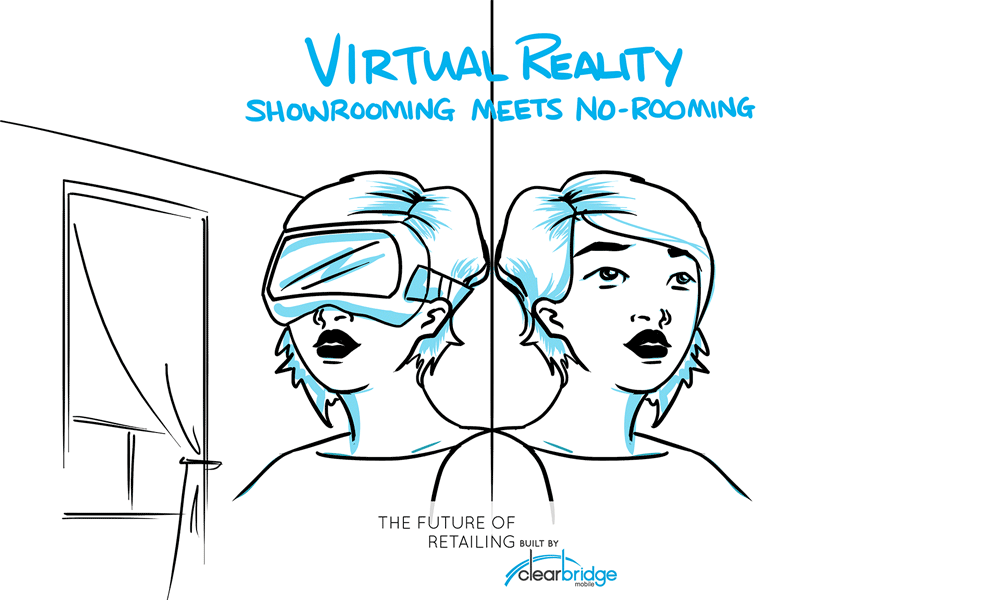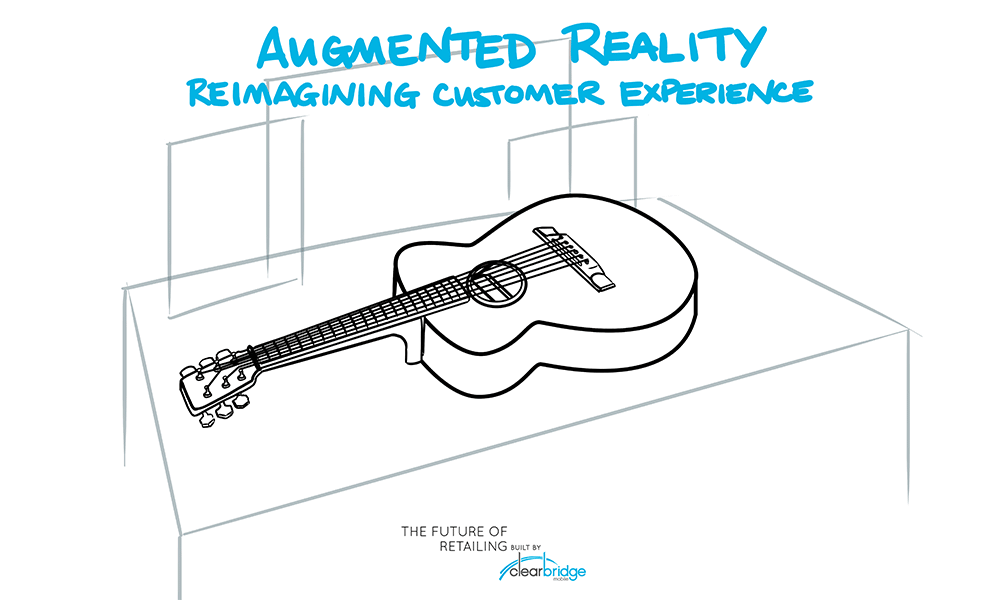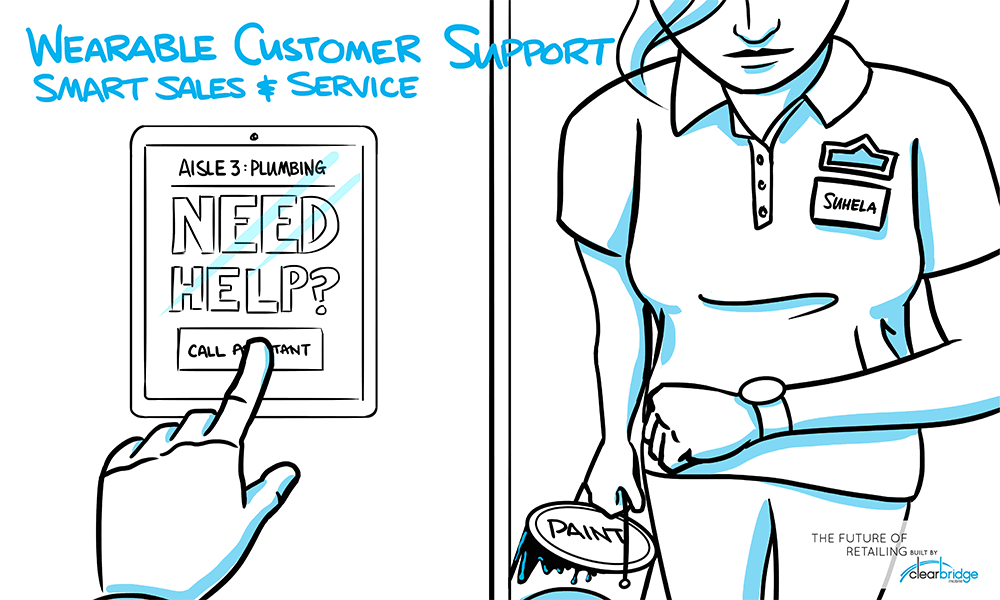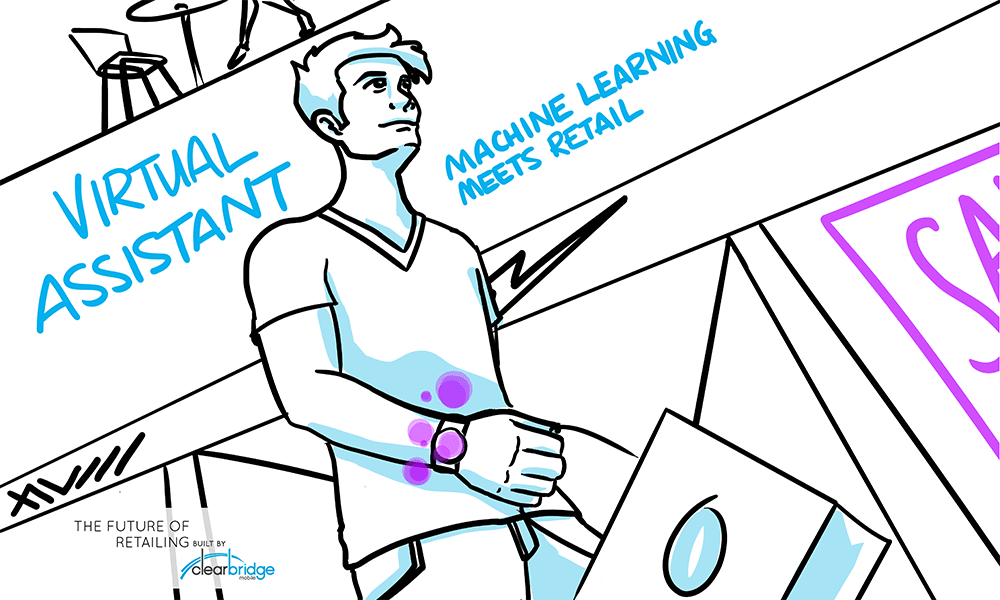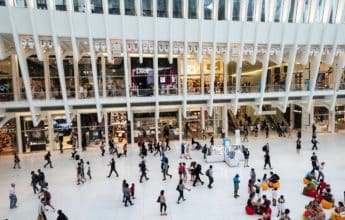For those of you who had the chance to catch up with us at IRCE 2015, you’ve seen our take on the future of retailing. The concepts we came up with were prompted by a slew of “next big thing” articles that we found a bit boring. Our ideas are a little less conventional, but infinitely more exciting.
We think the possibilities for retail are virtually limitless. Developments in mobile technology, virtual and augmented reality, wearables, and more offer the ability to radically transform the retail experience. Here are just a few of the possibilities.
Virtual Reality: Showrooming Meets No-Rooming
Imagine being able to use a VR headset (like Oculus) in the comfort of your own home, and being transported into a mall or your favorite retail store. Think about it – e-commerce platforms like Amazon or Zappos could offer a virtual reality store that compiles in real time. As users search, the shelves fill up with the most popular items, or stock themselves virtually based on the content of the search queries entered.
A similar concept can apply to traditional brick-and-mortar locations. Retailers are already supplementing physical locations with e-commerce experiences. What about virtual e-commerce? Your customers can have personalized shopping experiences based on their preferences and behaviour, anytime, from anywhere.
Augmented Reality: Reimagining Customer Experiences
Augmented reality could allow retailers to combine the mobile and in-store shopping experience. Imagine this scenario: a shopper sees a laptop in a store and wants more information on it. They scan the camera from their phone over the laptop and an app dissects it piece-by-piece and provides more information for each component. Hovering your phone over a t-shirt could present options for different colours, item/size availability, suggestions for other clothing to complete an outfit, and more.
Wearable Customer Support: Smart Sales and Service
In-store service is a very important factor in the retail experience. But sometimes, reps get busy and people who need help are left searching around for an employee. In large stores, this is not uncommon.
Wearables can help retailers provide smarter, more efficient customer service. One possibility is having assistance buttons throughout stores or within a mobile app that sends a notification to the nearest customer service rep’s smartwatch. Another option is for customers to request a specific type of assistance – for example, an electronics expert – via the app or button, and the appropriate service rep receives a notification.
Virtual Assistant: Machine Learning Meets Retail
This idea combines augmented reality and machine learning. Let’s use clothing as an example. A virtual shopper would help categorize your entire wardrobe, learn your favorite stores, and offer real time recommendations based on your particular needs and style preferences.
- You download the app and take pictures of your wardrobe
- It categorizes your wardrobe, and you add more information about your favorite styles, stores, etc.
- When you’re out shopping, the app send you personalized alerts/promotions based on buying patterns (using beacons or GPS) for participating retailers
- The more you shop, the better the app’s virtual assistant learns what you like and what you don’t
It’s like having your own personal shopper, right on your phone.
Embracing the Future of Retailing
With the evolution of mobile, virtual reality, wearable and augmented reality technologies, there are a wealth of possibilities for the retail industry. As consumer purchasing patterns shift, forward-thinking retailers can help proactively shape the shopping experience, rather than trying to play catch-up when things inevitably change.

